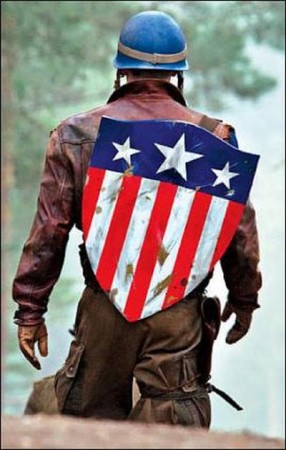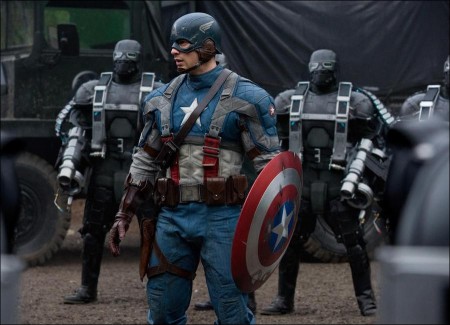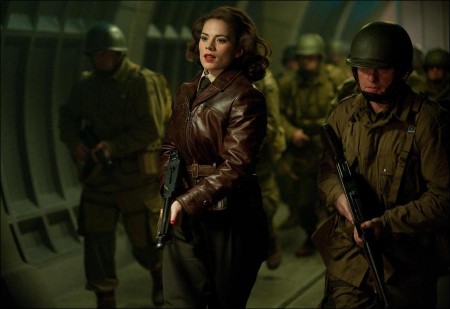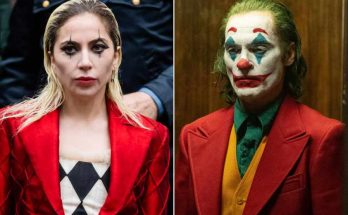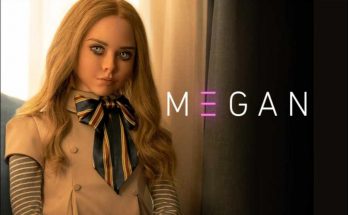With a character as recognizable as Captain America, translating the fantastic aspects of his iconic costume to the real world presented a challenge for conceptual artist and designer Ryan Meinerding and Academy Award® nominated costume designer Anna B. Sheppard. Taking into account seventy years of comics for reference, a balance needed to be established that would satisfy the fans and still be believable in the world of the film.
Above all, the suit had to marry coolness and fantasy with practicality, where Co-Producer Stephen Broussard says “Whether it’s Tony’s suit in ‘Iron Man’ or Thor’s Asgardian Armor, it’s always about striking that balance of not sacrificing what makes it so visually appealing on the page and why people have responded to it for decades. This is our interpretation of how we think Steve Rogers went from being a symbol, a guy on a USO stage with a costume that wouldn’t stop anything, to being the guy on the front line charging an army.”
Meinerding does his research thoroughly, pulling references from various sources and discussing each move in detail with the filmmakers. Every strap, every buckle has a practical reason for being there, beyond its cosmetic properties. Producer Feige comments, “We’re bringing the costume to life in a way that I think is absolutely a nod to the comics, but I think it is inspired in its believability—it looks like it’s of the time period and like it stepped out of the comics, but it definitely feels like it exists in our real world.”
Marvel is savvy to reference what has come before without being a slave to it. Feige adds, “We’d be foolish to throw the original designs away and start from scratch, but the bones are there—we wanted to pick the best elements of them, but tailor them to our actor and our story, so the final build is believable when you see it in action.”
While Evans was engaged in weeks of physical training, working toward the ‘physical perfection’ that Dr. Erskine’s serum would achieve, a team of artists were busy working on the serum’s opposite achievement—the transformed Johann Schmidt, The Red Skull. The multi-step process began with prosthetics designer David White taking a life cast of actor Hugo Weaving. This cast would serve as a basis onto which possible designs could be created. White explains, “My aim was to find a sculptural balance and connection between Hugo and The Red Skull. I wanted to make sure Hugo wasn’t lost beneath the final make-up.”
White and the producers went through several conceptual models before finding the right look. The goal was to achieve the skeletal appearance without any hint of Johann having been burned. White says, “Joe [Johnston] didn’t want audiences to sympathize with Red Skull, we didn’t want anyone feeling sorry for him. But he definitely wanted something that looked classically memorable, but be a little grotesque, without being disgusting. We finally hit on a look that struck that balance of hideous without veering too much into the grotesque; just cool and charismatic enough that you can’t take your eyes off him!”
Once the practical makeup was perfected—first applications took a team around three-and-one-half hours—CGI would be overlaid to apply the finishing touches to the look and remove Weaving’s nose. Feige recounts, “We always figured that digital effects would have to bring the character home, but apart from the minor things, like the nose removal, we were massively impressed with how far David White was able to take him from the first test.”
Also to be credited with the super successful result was Weaving’s ability to channel his portrayal through any amount of prosthetics on his face. White employed seven individual coated silicone pieces, which lay right next to the skin, and which were able to hold onto paint and makeup. The silicone also had the added benefit of a slight translucency of color that resulted in luminosity under stage lights, creating an otherworldly red glow.
Weaving comments, “At first, it was a bit of an ordeal to get into the mask. However, by the second round of tests, I realized just how much subtlety I could utilize in my facial expressions, and I could actually animate the mask pretty well. The cheekbones, eyebrows and mouth are quite extreme, but it enabled my expressions to come through, whereas some of the earlier tests it felt like I really lost the sense of Schmidt beneath the mask.”
“Under the lights, you get these beautiful curves,” enthuses White. “It’s a very organic and moves extremely well.”
Weaving would often spend 14 or 15 hours in the prosthetics while filming. “The heat can’t escape, so I would start sweating, and then the sweat will try to escape. Since it has nowhere to go, it would pop out of my ears or around my mouth, like I’m dribbling,” comments Weaving. To help counter this, heavy powdering during the application process became key.
Though not a stranger with fanciful costuming (her motion picture costume design credits range from period comedies to searing drama and military stories), double Oscar® nominee Anna Sheppard comes newly to the comic book universe. She adds, “This whole show has been a learning curve for me, and I feel all of the costumes are so special. The looks were very important and we discussed them day and night. As a designer, I had to be adaptive and listen to a lot of people with opinions that know more than I do! In this case, I got more guidance and I have learned a lot about this genre.”
On trying on the iconic suit for the first time, Evans says, “There is obviously a huge concern about giving a good performance on every job, but this was more like I’m going to be wearing this suit for potentially a very long time. It just felt like the suit was carrying a lot of weight, so to speak. There were a lot of people involved who worked very hard on the design. I would try on the suit every couple of weeks, and get poked and prodded and measured. Things were cut, things were added. They finally got it where they all wanted it and I have to say, I think it looks fantastic.”
Suit modeler Patrick Whitaker collaborated closely with designer Sheppard and costume supervisor Graham Churchyard—who all remained in constant communication with the filmmakers to ensure that every minute detail on the suit was accurate, workable, practical and stylish. The fabric is ballistic nylon, a heavy-duty woven nylon with rubberized backing (from a saddle and tack firm in the UK, where it’s produced for the manufacture of horse blankets). The nylon is durable and strong, capable of holding saturated color and providing relative ease of movement. Whitaker comments, “While the suit needed to be as functional as possible, it was okay if it was slightly clunky, because it’s from the 1940s.”
Howard Stark gives Rogers what eventually becomes the Captain’s signature weapon, his shield. Its distinctive round shape was actually an early design decision from creator/illustrator Joe Simon, to sidestep any infringement on a character published by a competing comic book company.
According to Dominic Cooper, who plays Howard Stark, “The shield is made of Vibranium, which is stronger than steel, but much lighter. The material doesn’t allow any transference of vibration, so when anything strikes the shield, there are no repercussions. So the Vibranium shield makes a bullet feel like a cotton ball…and I invented it. Not bad, right?”
“It probably wouldn’t be most people’s first choice of a weapon to take into battle. But what’s fun about the shield,” comments Kevin Feige, “is that 600 issues in to the Captain America comics, he is still able to do things with it that you’ve never seen before.”
Having said that, the writers did include a few good throws of the shield at some big moments in the film. “It’s both a defensive weapon and an offensive weapon, so it both deflect bullets and allows him to chuck it around,” says writer Christoper Markus. Stephen McFeely adds, “It’s inexplicably cool. There’s no reason that this big, round thing should be so excellent looking, but every time Chris walked past with it on his arm, I just wanted one!”
Several different shields were made for the duration of the shoot, some of the responsibility falling to prop master Barry Gibbs: “There are four types of shields in the movie—the original or ‘hero,’ the lightweight, the hard rubber and the soft rubber—and they’re all used in different ways. Chris used the original shield for close-up work, and alternated between the other three shields depending on what was called for in the shot. The soft rubber was always used for the fight work.” (CGI got a little share in the shield creation department as well. Evans adds, “Every now and then we’d do a shot where we’d utilize CGI. The shield was so big that if I really threw the thing the way the script called for, I could really hurt somebody.”)
Related Link: Read the Full Production Notes for Captain America: The First Avenger
Views: 205
